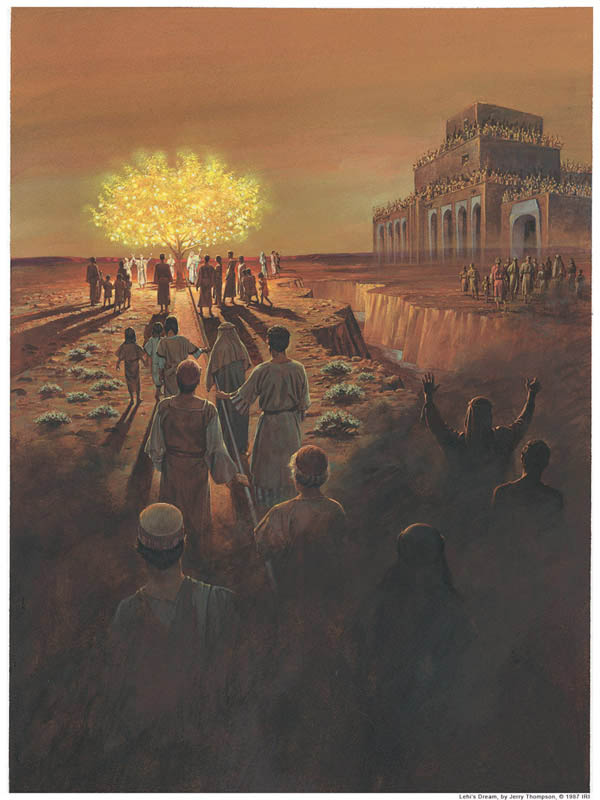Tree of Life
In the Book of Mormon, which is part of the official canon of The Church of Jesus Christ of Latter-day Saints, or Mormon Church, a prophet named Lehi had a vision. In his vision he saw “a tree, whose fruit was desirable to make one happy. ... And as I partook of the fruit thereof it filled my soul with exceedingly great joy”(1 Nephi 8:10, 12). There was a straight and narrow path, which led to the tree, but there were many obstacles along the path. There was also a rod of iron leading to the tree that acted as a guide for those who would hold onto it and follow it.
When Lehi told his sons about his vision, Nephi, one of his younger sons, desired to understand the vision. His petitions to the Lord were accepted, and Nephi was shown the same vision and given insight into what it meant. Of the tree of life, Nephi said, “It is the love of God, which sheddeth itself abroad in the hearts of the children of men” (1 Nephi 11:22). The love of God was manifest in sending His son Jesus Christ to the earth (see John 3:16). As recorded in 1 Nephi 11:25, Nephi learned that the iron rod is the word of God, and the fruit of the tree of life is the gospel, of which we must partake to enjoy God’s love.
In addition to the Tree of Life from Lehi and Nephi's vision, there is the symbolism of the Tree of Life found in the Garden of Eden:
- Now behold, my son, I will explain this thing unto thee. For behold, after the Lord God sent our first parents forth from the garden of Eden, to till the ground, from whence they were taken—yea, he drew out the man, and he placed at the east end of the garden of Eden, cherubim, and a flaming sword which turned every way, to keep the tree of life—
- Now, we see that the man had become as God, knowing good and evil; and lest he should put forth his hand, and take also of the tree of life, and eat and live forever, the Lord God placed cherubim and the flaming sword, that he should not partake of the fruit—
- For behold, if Adam had put forth his hand immediately, and partaken of the tree of life, he would have lived forever, according to the word of God, having no space for repentance; yea, and also the word of God would have been void, and the great plan of salvation would have been frustrated.
- But behold, it was appointed unto man to die—therefore, as they were cut off from the tree of life they should be cut off from the face of the earth—and man became lost forever, yea, they became fallen man (Alma 42:2-3, 5-6).
Thus, the Tree of Life not only symbolizes immortality, but has the power to impart it.
- And thus, if ye will not nourish the word, looking forward with an eye of faith to the fruit thereof, ye can never pluck of the fruit of the tree of life.
- But if ye will nourish the word, yea, nourish the tree as it beginneth to grow, by your faith with great diligence, and with patience, looking forward to the fruit thereof, it shall take root; and behold it shall be a tree springing up unto everlasting life (Alma 32:40-41, emphasis added).
Many Mormon Church scholars have written about the symbolism of the Tree of Life and its connection to both Ancient Near Eastern societies, and ancient American societies. Trees are often used in religious symbolism. Green, living trees represent the righteous, whereas dead, dry trees represent the wicked. Trees are also used to represent reaching toward Heaven or deity.
